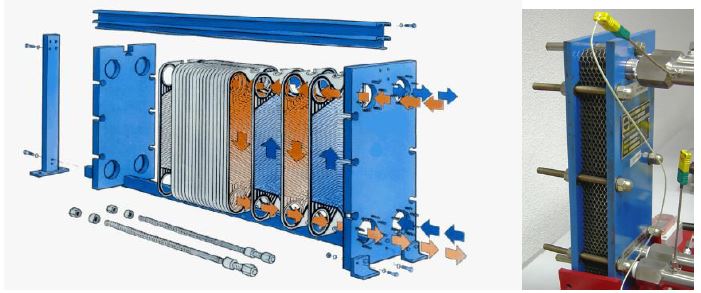A plate heat exchanger, PHE, is a compact heat exchanger where thin corrugated plates (some 0.5 mm thick, bended 1 or 2 mm) are stacked in contact with each other, and the two fluids made to flow separately along adjacent channels in the corrugation (Fig).
The closure of the staked plates may be by clamped gaskets, brazing (usually copper-brazed stainless steel), or welding (stainless steel, copper, titanium), the most common type being the first, for ease of inspection and cleaning. Additionally, a frame (end-plates and fixing rods) secures together the plate stack and connectors (sometimes PFHE, standing for plate-and-frame heat exchanger, is used instead of PHE).
Plate assembly is sketched in Fig. 2. Suitable channels, sometimes helped by the gaskets, control the flow of the two fluids, and allow parallel flow or cross flow, in any desired number of passes, one pass being most used.
They have large conductance coefficients (up to K=6000 W/(m2·K) for liquid-to-liquid use), are ideally suited for low-viscosity fluids, the number of plates can be adjusted to the needs, and the transfer surface accessible to cleaning (the latter two advantages only for gasket assemblies; in any case, the gaskets should be changed if dismounted).
The projected area of plates is usually taken as nominal heat transfer area, in spite of the real curved surfaces and lost space in gaskets and ports.





